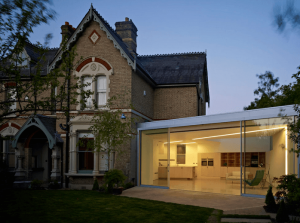When it comes to residential architecture in London and other parts of the UK, energy efficiency is a big focus. However, it can be tricky to achieve. The hardest part is upgrading older properties. It gets trickier when there are protections to limit what people can change on homes. We want to look at this here and explore how to make it easier to approach retrofitting.
Old housing stock
 The main issue in the UK is the houses are some of the oldest in Europe. More than a third (38%) of properties are from before 1946. That is more than in countries like France (29%) and Italy (20%).
The main issue in the UK is the houses are some of the oldest in Europe. More than a third (38%) of properties are from before 1946. That is more than in countries like France (29%) and Italy (20%).
These houses typically feature solid building materials and single glazing. As a result, they can be very inefficient when it comes to heating. A lot of heat can be lost through the envelope of the building, especially when there is no insulation.
The solution here is to retrofit properties. What this can do is add insulation, update the windows, and upgrade the ventilation. Overall it can work to make properties easier to heat and cool so there isn’t as much reliance on fossil fuels such as gas central heating.
Heritage rules
However, it is not always a simple case of making changes to a property. There are many areas in the UK where you can’t do that. For example, there is residential architecture in London and other places with listings. Here you need to get permission to make various changes, especially if they will change the look of a property. There are also conservation areas where the whole district has rules like this.
Sadly retrofitting can cause issues here. Adding external insulation can change the look and character of a property. A change to the windows can do that too, especially because it is hard to make newer ones look like traditional features.
Some experts are recommending a relaxation of the heritage rules to promote more retrofitting. One option here would be to allow it on the sides and rear of properties. Often they have little architectural value and it is only the main facade that offers any. So, it would be an option to upgrade these sides but preserve the fronts.
The situation is a very tricky one because there are plenty of reasons to preserve heritage properties. However, there is a real need to improve energy efficiency by modernising homes. It can come down to trying to find a balance to achieve both. Perhaps more flexibility with the rules would help.
Ask us about residential architecture in London
Like many projects the key thing here is to look at all the options. There are plenty of things you can do with different properties. For example, there can be cases when adding insulation internally is an option. Plus there are lots of different window products to explore, including secondary glazing.
If you are looking at retrofitting and upgrading a property, we would love to help. It is something we have experience with. Plus, we have a unique knowledge of the residential architecture in London. So, contact us for advice and support with getting permission for projects.
